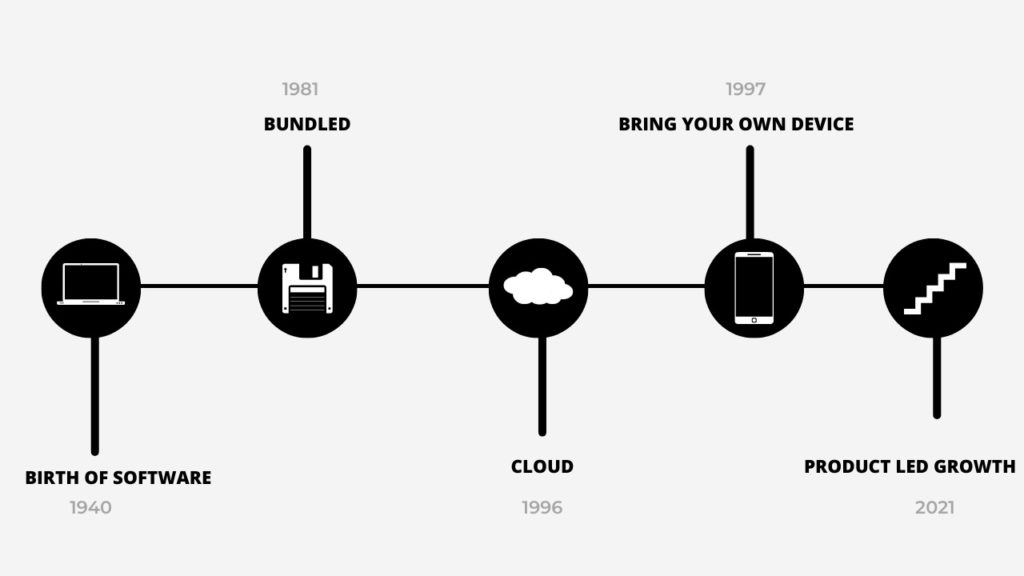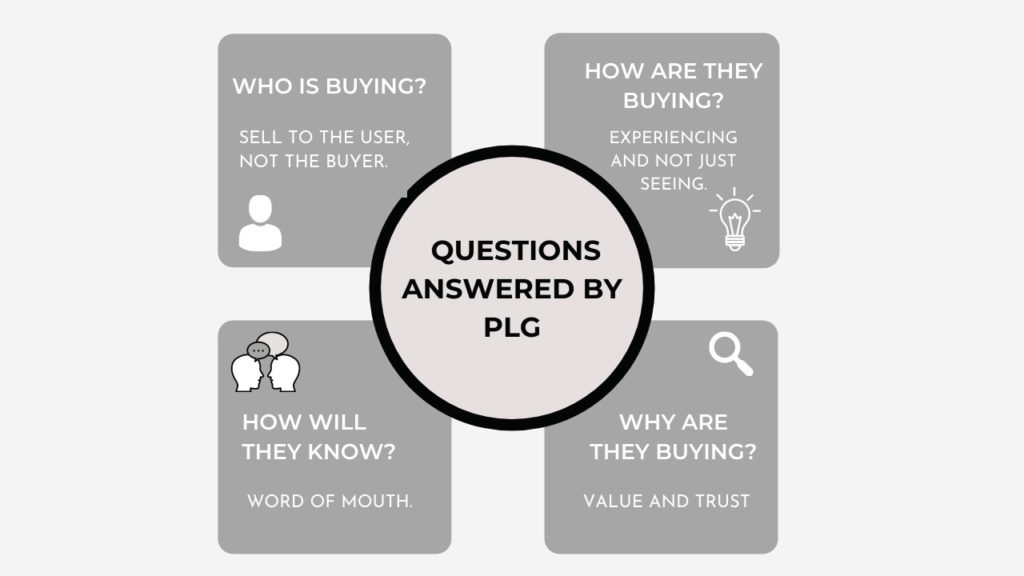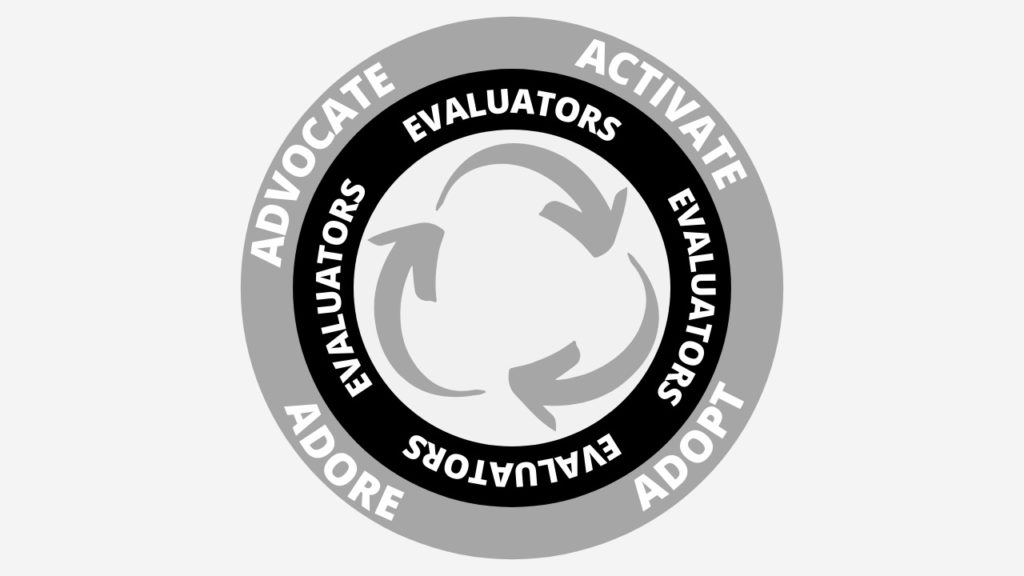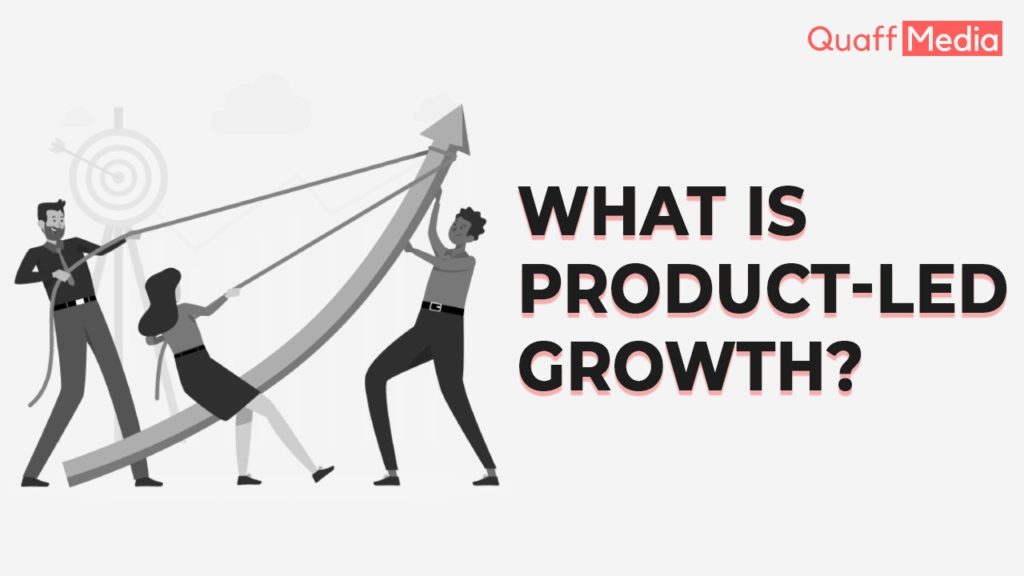Introduction
We’re in the midst of a significant transition in how people use and purchase the software.
Salesforce has been bringing software to the cloud for well over a decade. With the first iPhone in 2009, Apple put digital experiences in people’s pockets. In the years afterwards, the market has been swamped with consumer and business-to-business solutions that claim to suit just about any requirement. The most memorable product experiences of the past are no longer surprising; they’re expected.

That’s why this shift is more significant than any other we’ve seen before: it affects both consumer demand and market supply. Consumerization, or the shift toward consumer-grade UX in B2B SaaS solutions, is being pushed by tech-savvy consumers who are seeking software that is more beautiful, intuitive, powerful, and affordable than the tools they used previously.
Buyers want to self-educate; according to a 2015 Forrester study, approximately 75% of B2B buyers now prefer to buy through an app or website rather than a salesperson. Not only are 80 per cent of individuals more willing to do business with a firm that offers personalization, but it is also anticipated.
However, according to Salesforce’s 2017 State of Marketing study, 52 per cent of B2C clients would switch businesses if they didn’t get a tailored experience. Furthermore, people today want immediate gratification and will abandon products that do not supply it—for example, 21% of people will open a mobile app once and then abandon it; By the 90-day point, 71% of app users would have abandoned the app entirely.
And, for the most part, the market is responding to these consumer needs. It’s easier than ever to start a business, yet with more businesses comes more competition. Consumers now have access to an ever-expanding range of products that meet their needs.
As a result, any lingering user patience for clumsy old software is eroding—people are more eager than ever to abandon goods that fall short of their expectations. For example, according to Blissfully’s 2019 SaaS Trends study, the average mid-sized company’s SaaS stack had a 39 per cent turnover last year.
So, what does this mean for product development in the future?
The truth is that a positive client experience has always been critical to business. Sales have already held that experience. You spoke with a salesperson if you wanted to purchase a new product. If you were lucky, they were competent and sympathetic, and they were able to assist you in selecting the finest product for your requirements. Early digital marketers were able to analyze results and own growth indicators like engagement and acquisition thanks to the internet.
People, on the other hand, no longer want to connect with salesmen or marketing campaigns—at least not at the price of truly experiencing the goods they’re buying. Businesses must redefine their marketing, sales, and service strategies, as well as radically rethink the roles of their customer-facing personnel, to keep up with the market and stay ahead of the curve.
What is Product-Led Growth?
Product-led growth (PLG) is a business strategy in which the product is the primary driver of user acquisition, expansion, conversion, and retention. It unifies the whole firm, from engineering to sales and marketing, around the product as the most important source of long-term, scalable business success.
We came up with the product-led prism to help you see how a product-led approach works:
The many hues that make up white light get divided when light passes through a prism, creating a rainbow effect. This is because each colour has its wavelength and refracts light at a distinct angle. The product-led prism works in the same way as the product-led prism but in reverse.
The various hues represent various teams—marketing, sales, customer service, design, and engineering—that work on separate wavelengths. The product-led prism brings these teams together rather than isolating them. The bright, focused light of the user’s experience is made up of their combined wavelengths. Isn’t it amazing?
Now, let’s be clear about something: product-led growth is not the same as PM-led growth.
Consider it a form of product democratization: Product-led growth, like any functional democracy, necessitates traditional decision-makers involving a bigger, more varied range of stakeholders in the decision-making process. Is this leading to more tough and complicated discussions? Yes. Do challenging, complex debates result in more innovative, better business decisions? Absolutely.
The option is to keep growing by recruiting more people. As a result, your company will almost certainly move slowly, be unable to respond at the speed required to succeed, get bloated while attempting to match customer expectations with humans, and have higher operating costs and profit margins.
It’s time to be concerned about your product-led competition if you’re not actively thinking about how to decrease friction at every customer interaction and how to create customer loyalty and advocacy.
Companies don’t become product-led overnight, of course. Becoming product-led is a process and a journey that necessitates a shift in mentality at both the individual and organizational levels. It will require time, effort, and dedication. However, as the companies listed below demonstrate, when done correctly, it may be well worth it.
Examples of product-led companies?
Let’s begin with a tale of an improbable hero.
In 2011, a new business was established in a busy and well-funded market. Cisco, Microsoft, Adobe, Citrix, and Polycom were all expected to compete. It would have been absurd to expect them to gain a major part of the market.
However, 3 million users used the programme in 2013. That figure was 30 million in 2014. They surpassed 100 million users in 2015. In 2019, the firm went public with a market capitalization of $15.9 billion. Of course, we’re talking about Zoom. Zoom’s success is multi-faceted, but it is an excellent example of a well-executed, product-driven strategy.
Eric Yuan, the company’s CEO, came from Cisco via the Webex acquisition. His dissatisfaction with the inefficiency of previous video conferencing services inspired him to create Zoom. The software performed flawlessly, and its use was enhanced by a simple entry point (free for calls up to 40 minutes), Paywalled advanced features and controls, Slack connectors and other software.
Of course, not every product-driven business succeeds. There is no such thing as a magic bullet, and anyone who claims otherwise should be avoided. However, many of the world’s most successful—and beloved—companies are product-driven.
You’ll identify some of the best-funded, fastest-growing, and stickiest products on the market today if you glance at the listings below.
Examples of product-led B2B companies:
Airtable: In 2018, the company reported $20 million in revenue and launched Airtable Universe to expand the inspiration of use cases, which is typically handled by customer success.
Slack: Slack is used by 43 per cent of Fortune 100 companies, and they are ardent supporters due to their company-wide commitment to its positive experience.
Figma: Thanks to its product-led approach to solving designer pain points including project organization, file management, and real-time communication, the company closed a $40 million Series C in 2019.
Examples of product-led B2C companies:
Pinterest: The company’s curated feed, tailored user onboarding, and intrinsic virality make it a poster child for product-led development, and it went public in 2019 with a $12.7 billion valuation.
Typeform: Since its free beta launch in 2013, Typeform has gone popular thanks to its conversational approach to data collection and gorgeous, easy-to-use form builder. In 2017, they raised $35 million in a Series B round.
Warby Parker: Thanks to its omnichannel user experience and free Home Try-On programme, the digital-first eyewear retailer raised a $75 million Series E in 2019. (aka free trial).
Twilio, Expensify, Atlassian, InVision, Zapier, Hootsuite, Buffer, and the list goes on. All are highly successful businesses that have grown quickly and scalable by focusing on their product from the start. Others, such as HubSpot, have effectively switched from a sales-led to a product-led strategy.
These businesses, in particular, employ a bottom-up strategy by providing consumer-grade products via a freemium or free trial model. Rather than aiming to push consumers into the arms of a waiting sales rep, their marketing efforts are mostly focused on persuading customers to sample the products for themselves.
Once users are in the product, these organizations all provide intelligent user onboarding experiences as well as continual in-app messaging, effectively integrating sales, customer service, and marketing communications into the product.
Product led growth and go-to marketing strategy
By putting your product in charge of your company’s go-to-market strategy, product-led growth has an influence.
The following questions should be answered by good go-to-market strategies and take a look at how PLG responds to those go-to-market concerns:
1. Who is your target market for your product?
You should be selling to users, not buyers, in a product-led manner.
2. What sources will they use to learn about your product?
Rather than typical marketing tactics, PLG relies on virality and word of mouth. More specifically, satisfied customers will tell their friends and coworkers about your goods.
3. Why are they buying your stuff in the first place?
Your product should be more reliable, provide more value, and provide a better user experience than your competitors.
4. What method do people use to purchase your product?
Rather than relying on sales agents, users should become buyers within the product itself—or at the very least after a firsthand experience with the product.

Freemium or free trial revenue models are commonly used by product-led SaaS companies to allow users to try out their product without having to go through sales or marketing middlemen. In a product-led experience, “the product “paywalls” follow, rather than lead, the real value that the user receives, and pricing scales as usage increases and more value is delivered,” as OpenView puts it.
As you might expect, this technique exposes your top of the funnel (or your flywheel, if you’ve already switched to this model, which we’ll go over in greater detail below) to a large number of potential customers much earlier in their buying cycle. It also means that for consumers to convert to paying customers, your product must be valuable—and must demonstrate that value effectively in a short amount of time.
In a freemium or free trial model, you’re effectively selling to users, not buyers, who could be high up in an organization or part of a procurement team far removed from the workflows that your product was created to improve. Product-led growth is a bottom-up strategy that focuses on the demands of your customers.
There are many different types of freemium and free trial revenue strategies. The free trial model is the easier of the two to understand. Users who sign up for a free trial enjoy the entire product experience for a short time—usually 14 or 30 days—or, more rarely, until a particular use capacity is reached.
Users that utilize a freemium product, on the other hand, can use it indefinitely with some limitations. There are three basic categories of freemium:
- Features that have been reduced
Upgrades to a subscription plan are required for additional features or functionalities—for example, Slack.
- Capacity or consumption reduction
Dropbox, for example, uses storage restrictions and data caps to limit usage.
- Reduced support
Access to support docs, CS, and other resources is available on a tiered basis—for example, Heap Analytics. Many businesses use a combination of the three—for example, Heap’s freemium plan has limited bandwidth and support.
Whatever form a free trial or freemium plan takes, the goal is the same: get people into your product as quickly as possible and let them see for themselves how valuable it is.
Becoming product-led
Product-led growth is inherently incompatible with sales-led and marketing-led strategies, even though it requires talented sales and marketing teams.
You can either commit to product-led or go differently if you don’t want to. However, becoming product-led may be a long and winding road that looks different from one organization to the next. So, after you’ve decided to adopt product-led thinking, how do you go about becoming a product-led organization?
Two major changes must occur: the first is in your product, and the second is in your organization.

First and foremost, you must have a fantastic product that delivers on the promise of value. If you think product-led and design-led sound similar, you’re right—the empathy and inventiveness inherent in design-led thinking are critical components of product-led growth.
This is because PLG requires a well-designed product. Well-designed does not always imply “beautiful.” It indicates your product is simple and easy to use, with little friction, sticky features, and a quick time to value.
You need a deep understanding of your users’ journey and the problems they’re seeking to address to design an engaging product experience that can demonstrate its worth.
Your entire product should be designed to make it easier for users to solve their problems, which includes removing pain points where possible, providing effective user onboarding that is focused on user goals rather than product features, and providing ongoing, contextual in-app communications for things like new features, upsell prompts, and so on.
Enable technologies like Fullstory, Mixpanel, or Heap in conjunction with qualitative feedback from your customer-facing teams to collect this data.
Product-led growth necessitates sophisticated, tailored user experiences that help consumers become better versions of themselves in the end. This does not imply that you should slap a product tour bandaid on your existing product and call it a day.
It means creating products that understand what unique users are trying to achieve with your product through a combination of user journey mapping, user testing, and intelligent data implementation, and adapting the experience at the individual level, effectively allowing your product to serve as support, CS, sales, and marketing.
The good news is that things (and the people who make them) are becoming more intelligent. We now have the technology to create software that responds to what a person wants or requires at any given time. We now have the data—and storage is now affordable enough—to make this a widespread reality.
In your company, the second and more challenging transition is required. Product-led companies move quickly, with a constant emphasis on their users’ wants and aspirations and a culture of collecting and exploiting contextual feedback. PLG is a far-reaching, company-wide process that demands coordination and collaboration across divisions, so product-led firms are aligned as well.
Product-led growth necessitates as well as benefits cross-functional teams. Breaking down silos is an important step on your company’s route to PLG, but it also improves your teams’ capacity to communicate and coordinate, resulting in better informed and coordinated decision-making throughout your organization.
For traditional sales, marketing, and customer service professionals, product-led growth might be a frightening proposition. Yes, adopting a PLG approach will change what you look for in sales, customer service, and support personnel.
But that doesn’t mean you should abandon your customer-facing teams; rather, you should scale these services through your product, which will relieve your employees of the heavy lifting and free up their time, energy, and creativity to focus on high-value, strategic work.
Internal alignment requires that your team speak the same language and use the same reporting system. An important component of the process is choosing the correct success measures and aligning your employees around them.
As a result, the metrics provided below should not be compartmentalized. They should be reported on and influenced by cross-functional teams who can use the data to make better decisions and implement coordinated improvements across your organization.
So, with a product-led growth paradigm, how do you assess success? What are the PLG measurements?
You’re probably already measuring several product-led growth KPIs, whether you recognize it or not. Many major SaaS KPIs are similarly critical to PLG, albeit some may be more or less significant or utilized differently under a product-led strategy than under other business techniques.
For example, a short time to value (TTV) is an important feature of consumer-grade items. The time it takes for new users to attain their initial aha moment or activation event is referred to as TTV. Any excellent user onboarding experience should aim to lower TTV as much as possible, assisting new users in quickly realizing the value of your product.
The time it takes users to progress from acquisition to activation—the first two steps in Dave McClure’s pirate metrics model—could alternatively be considered time to value. Other important SaaS indicators for measuring product-led growth include:
- Revenue from expansion
Upsell revenue, also known as expansion MRR or upsell revenue, is a metric that evaluates the revenue produced from existing customers through upsells, add-ons, and cross-sells, among other things. Expansion revenue is frequently disregarded in favour of the net new acquisition, although it is one of the most critical growth levers for SaaS. ProfitWell suggests that expansion revenue accounts for at least 30% of total income.
- The average revenue per user (ARPU)
Total MRR divided by the number of customers yields the average revenue per user (ARPU). ARPU, which is sometimes dismissed as a vanity statistic, can be a very excellent predictor of your company’s overall health.
- Customer lifetime value (CLV)
A forecast of how much money your company will make from a single customer throughout their relationship. CLV is used to identify highly valuable client categories and gain a better knowledge of what it costs to acquire and retain those customers.
- Product-qualified leads (PQLs)
MQLs, farewell! Hello, leads that have already gotten value out of your product via a free trial or freemium account! Product-qualified leads are essentially activated users—people who have taken a critical action within your product had an aha moment and seen firsthand the value your product can provide.
- Net churn
In general, revenue churn is a better indicator of SaaS growth than customer churn. Net revenue churn, on the other hand, can frequently provide a more accurate picture of your present customer base than gross churn, which does not take into account growth or upsell revenue.
- Virality and network effect
These names are often used interchangeably, although they are not interchangeable. They do, however, frequently occur together. “A viral product is one in which the rate of adoption rises with each new user. The more people who join, the faster it expands – up to a point.” A network effect product, on the other hand, increases in value for users as more people join, such as a two-sided marketplace like Airbnb or a social platform like Facebook.
You’ll want to consider how the metrics above affect your flywheel as you plan out your vision of success. That’s right, the funnel is no longer functional. The flywheel is alive and well!
In case you missed it, Hubspot rocked the SaaS world in 2018 when they announced that they’d discarded their funnel in favour of a flywheel model:
“Today, customer referrals and word-of-mouth have become the largest influence on the purchase process, which means the funnel has one major flaw: It views customers as an afterthought, not a driving force. You see, funnels produce customers but don’t consider how those customers can help you grow. That’s where the flywheel comes into play…”
To design a flywheel model that would appeal to product-led enterprises, we interviewed over 50 companies.
As a result, Product-Led Growth has emerged. Flywheel is a business-growth framework based on investing in a product-led user experience. The experience is developed in this framework to promote user satisfaction and advocacy, which leads to compounding growth in new user acquisition.

The shift from the funnel to flywheel doesn’t happen overnight, but we believe that adopting the flywheel model’s concepts is a key first step toward becoming product-led.
The benefits of product-driven growth
PLG is not a strategy that can be set and forget. Transitioning from a sales-led or marketing-led approach to a product-led approach takes greater alignment, devotion, and (at least initially) more effort from just about everyone in your firm. It’s a corporate strategy that defies the established order of things.
So, why should a business bother? Why is product-led growth so important?
For one thing, there’s the matter of money. Product-led growth, according to OpenView, is “a capital-efficient methodology via which organizations can scale swiftly.”
Product-driven growth generates more revenue per employee or higher financial productivity. Because the product is the driving force behind acquisition, engagement, retention, and expansion, businesses may reallocate or save vast sums of money that would otherwise be spent scaling sales, marketing, and service initiatives.
Product-driven businesses approach new client acquisition from the ground up, with fewer touches. A freemium or free trial activates the flywheel, resulting in lower customer acquisition costs (CAC) and shorter sales cycles because the product handles much of the sales, marketing, and customer service labour. Because of the smaller transaction size inherent in a PLG method, revenue variety is increased, and the impact of losing particular accounts is reduced.
A product built for a product-led approach is usually always a better, more intuitive, and user-friendly product. Consumer-grade products may necessitate more thinking, empathy, and resources, but the result will be a product that people love using. This translates to happier customers, greater NPS scores, longer customer lifetimes (and higher LTV), and increased viral growth.
The obvious starting point for product-led growth is the product. But what makes PLG so successful is that the increased inbound attention and word-of-mouth promotion that comes with having a well-designed product keeps the momentum going and grows exponentially.
Investors aren’t fooled by any of this: OpenView discovered that “PLG companies perform better than their non-PLG peers in the SaaS index” and that “product-led businesses are valued more than 30% more than the public-market SaaS Index Fund” in their examination of 2018 SaaS IPOs. The greatest advantage of implementing a product-led growth technique, however, is that it leads to stronger team alignment. And aligned teams work quickly and efficiently.

